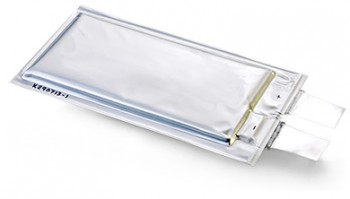OXIS Energy now targets 450 Wh/kg and 500 Wh/kg
UK-based OXIS Energy announced that its lithium-sulfur (Li-S) battery cells already achieved 425Wh/kg on a High Energy 16Ah pouch cell design for HAPS applications (High Altitude Pseudo Satellites).
The target by the end of this year is 450 Wh/kg and a stunning 500 Wh/kg by the end of 2019.
On the module level, energy densities now stand at 300 Wh/kg, but by the end of 2019, OXIS Energy hopes to reach 400 Wh/kg.
We are aware that lithium-sulfur batteries bring a huge potential for increased energy density, although there are drawbacks in other areas that need to be solved if these types of batteries are to be suitable for EVs (cycle-life, power output, charging times, etc.).
Everything seems to be more promising these days for OXIS Energy, since the company raised £3.7 million ($4.8 million) in an investment earlier this year from Aerotec, Brazilian venture capital fund focused on Aerospace and advanced manufacturing.
In May, the company said that “is in the process of opening a battery production plant in the state of Minas Gerais in south eastern Brazil.” R&D will remain in UK.
Interview with Huw W. Hampson-Jones, CEO OXIS Energy August 2018 from OXIS Energy Ltd on Vimeo.
Press blast:
“Dr. David Ainsworth, Chief Technology Officer commented:”At 425Wh/kg, OXIS has one of the lightest pouch cells currently available and is already attracting significant interest from major players in the aerospace sector. The cell is about to go into prototype applications.”
OXIS has also developed a prototype battery module for the aviation sector which has enabled OXIS’ customers to increase flight time three-fold. The battery module uses a High Power, Ultra-Light Lithium Sulfur pouch cell at 300 Wh/kg. Future modules will tap into the increasing capabilities of Lithium Sulfur pouch cells, where High Power cells are forecast to achieve 400 Wh/kg by 2019.
Dr. Mark Crittenden who is Head of Battery Development & Integration said: “The benefits of switching to electric aircraft are seen as reduced costs and reduced noise pollution. The most important part for that success is having very lightweight batteries which store sufficient energy to provide the required aircraft flight time and range. We are delighted that lithium sulfur provides this solution and will enable the uptake of electric aviation.”
OXIS’s relationship with key materials suppliers remains crucial in the achievement of these technical milestones. OXIS has also been awarded the LiSFAB project which is funded by Innovate UK through the Faraday Challenge Programme which aims to improve the power and cycle life of the OXIS Li-S technology for heavy electrical vehicles.
According to Huw Hampson-Jones, CEO of OXIS, “in the last 12 months, the pace of technological development has quickened substantially. This reflects our collaboration with some of the world’s foremost material companies, as well as clients in the aviation, defence and automotive sectors. OXIS has a special programme valued at US$10m, dedicated to the development of high powered lithium sulfur cells for electric buses and trucks. In many ways, over the course of the next 2-3 years with commercial development, technological achievements as well as the mass production of lithium sulfur cells coming on stream, the case for investing in lithium-ion gigafactories is a ‘fool’s paradise’.””
Source: OXIS Energy via Green Car Congress

